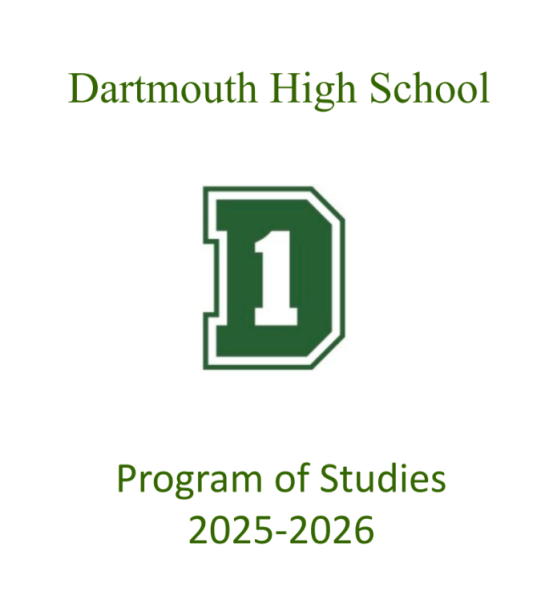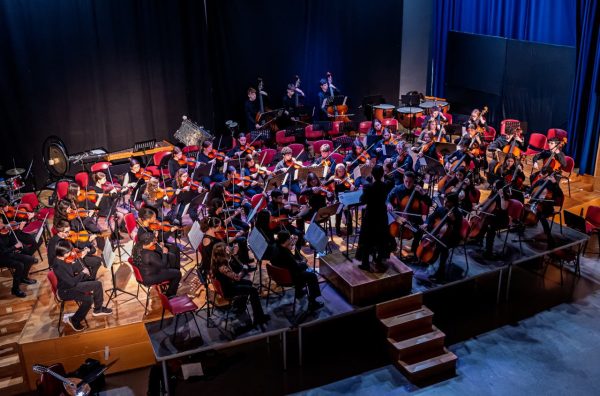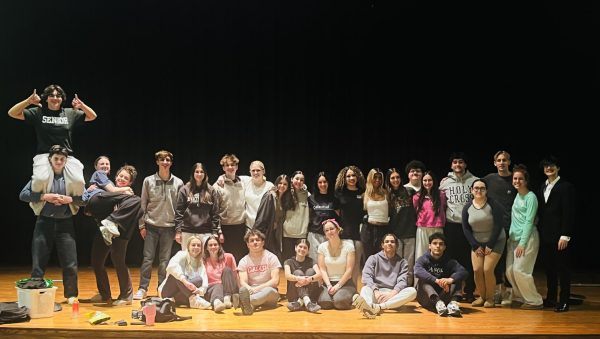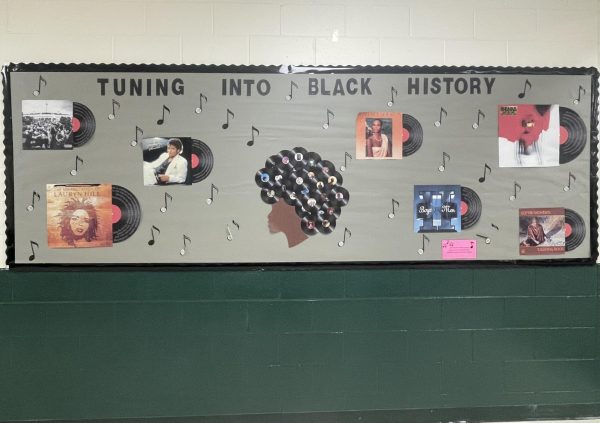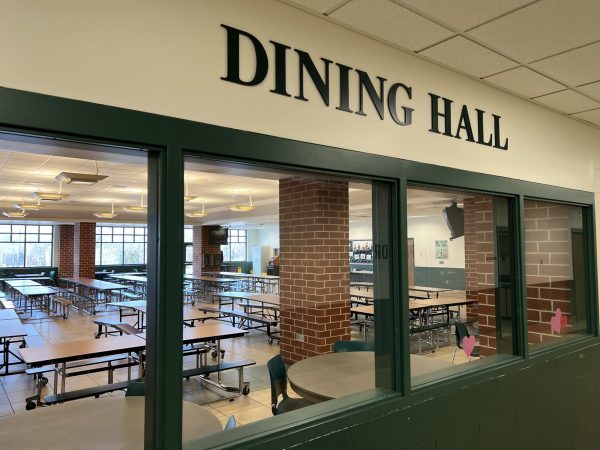Videos, lunch, and Oliver Wendell Holmes
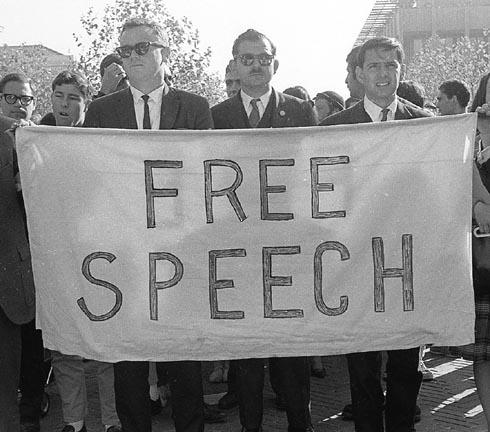
Every Friday during the three lunch shifts, the creations from the Intro to Video class and Media Club play on the television screens to showcase student talent and provide entertainment for the general public. While this has been a tradition over the years, a recent incident has led to the current suspension of the Lunch Show as well as a discussion on censorship and the well-being of students.
On November 20, a video created by DHS freshman Victoria Houde played on the cafeteria television screens for the first lunch shift. “We were assigned to make a film about a science experiment,” said Houde. She is currently in the Intro to Video class taught by Joshua Moulding.
The video consists of two scientists creating a human-like creature through electricity and advanced technological research. During the scene, the scientists begin an argument that involves screaming and harsh language pertaining to their creation. Along with the heated banter, flickering lights were shown to simulate lightning on the immobile figure.
A few minutes into the video, Principal John Gould began turning off the four television screens, cutting off the work mid-episode.
“There are about 300 kids in the cafeteria in each lunch shift,” he said. “I saw trauma on the TV’s, and I thought it was the responsible thing to do in shutting it off. For some students, trauma like that on the screen could trigger them.”
According to Psychology Today, a site created for and by renowned psychologists, triggers are seen to be both a positive or negative driving force towards an emotional response. Something as simple as yelling can bring on memories of prior abuse and can cause a negative emotional outlook for the rest of the day.
Local psychiatrist Dr. Jonathan Schwartz said, “It strikes me as unusually protective of kids given today’s worlds, and at the same time, it seems reasonable and sensitive to avoid a situation where some kids may be uncomfortable.”
For some students, this was a controversial decision.
DHS senior Austin Vincent said, “We’ve seen history movies with outrageous killings. And I’ve seen kids getting yelled at by teachers. Most of the kids I’ve talked to said there was no negative reaction to it.” Vincent is currently a member of the Media Club and has taken the Intro to Video class as well as contributed to the Lunch Show many times in the past.
As for Vincent and Houde, the halting of the Lunch Show by Dr. Gould was seen as a surprise. “I wasn’t there,” Vincent said. “I just received texts going into lunch from friends saying what was happening.” The scene was not shown for the other two lunch shifts.
As for Dr. Gould, there were conflicted emotions about the actions towards terminating the Lunch Show until a final verdict on censorship can be met. “Was it the right thing? In a way, no,” Dr. Gould said. “They worked hard on the video, and they seemed to understand when I talked to them about it later on. But trauma can be triggering for those experiencing it at home.”
In this situation, the topic of psychological triggers and those who would suffer from viewing content with graphic violence or intense sounds is mixed with the ideas of censorship and artistic integrity.
However, as Vincent brought up, where do we determine what is appropriate for school content in the conditions of triggering media? In most school settings for graphic material, students under the age of 18 are required to have their parents sign permission to watch the film clips. There is the ability to walk away from moments that appear to be overwhelming. However, there is the same opportunity when watching the Lunch Show. Nonetheless, as the clip is shown without prior warning, it can catch other students off guard.
All videos are reviewed by Mr. Moulding before being shown during the lunch shifts, so there is the conflicting topic of the First Amendment’s power and the people it can affect.
“As I try to quote the Civil War hero Oliver Wendell Holmes,” Dr. Gould said. “Freedom of speech ends when you yell fire in a movie theater.”
The quote originated from the Schenck v. United States (1919) case where the First Amendment was challenged. During WWI, after flyers were distributed by Charles Schenck, a notable socialist, were thought to be defying the government to enlist servicemen, the Supreme Court decided that in some cases, free speech can be harmful. Justice Oliver Wendell Holmes declared that the Espionage Act of 1917, which halts any infringement on the recruitment of soldiers, was Constitutional and did not impede the First Amendment.
The video, “The Experiment” is available for public viewing on the Dartmouth High TV-Lab YouTube channel as of right now at

